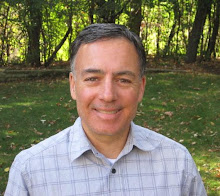Ehlers-Danlos Syndrome
On May 16 I will be running the Cleveland Marathon. In addition to the personal accomplishment, I am also raising research money for Ehlers-Danlos Syndrome (EDS). My good friend, Burt Vilagi, has arranged for EDS Network Cares to be an official charity partner for the 2010 Cleveland Marathon.
EDS is a connective tissue disorder with symptoms that range from mild to life threatening. The most rare and serious form of the disease is vascular EDS, which often results in arterial rupture. Two years ago Burt's niece nearly lost her life to this condition. There is no known cure for EDS, but there is some very promising research being conducted at Johns Hopkins University. There have been treatments developed for a related condition that with some additional time and resources may be directly applicable to vascular EDS.
What can you and I do to help? I appreciate your financial support to continue the research for this effort.
1. Donate online at this website. In the special instructions on the Donations page, please note "Cleveland Marathon" for tracking purposes.
2. Write a check to EDS Cares Network and send it to me. (621 Gloucester Drive, Highland Heights, OH 44143).
On behalf of my friend and his family, thanks a lot for your support.
Dr. Hal Dietz, the chief researcher at Johns Hopkins for EDS, wrote a very moving description of the condition and its impact.
“Vascular Ehlers-Danlos syndrome (or vascular EDS) is a disorder of the body’s connective tissue – the material between the cells that give the tissues form and strength. In vascular EDS the body lacks sufficient type III collagen, a molecule that contributes to the strength of the skin, intestines, uterus, and most importantly, the blood vessels. People with vascular EDS live with the knowledge that they will die from this condition at an age ranging from childhood to young adulthood. They are also told that there are no effective treatments. There are no medications that are known to strengthen the tissues or delay blood vessel rupture. Attempts at surgical repair are often delayed there is confidence that the patient will die within hours if nothing is tried. This is because the tissues are so weak that they often simply fall apart during surgery – akin to trying to sew together wet tissue paper. Of all the conditions that I care for, I hate this one the most. It not only drastically shortens the length of life, but also robs people of any meaningful sense of hope and quality of life – always anticipating that the shoe will drop at any moment. Indeed, all too often children with vascular EDS lose any sense of ambition and purpose despite truly remarkable talents and potential. To their mind, “Why bother.”
Fortunately, there is now strong reason for hope…It is now our goal and intention to make mouse models of vascular EDS in order to learn more about the condition and to test this and other therapies. If someone had suggested 5 years ago that a pill might be able to treat a connective tissue disorder, I would have considered them crazy. Given recent breakthroughs and sufficient resources for further research, I will be shocked if a revolutionary new treatment for vascular EDS is not in general use within 5 years. I have already begun to share this sense of optimism with children with vascular EDS. Our job is to bring this goal to fruition. Their job is to begin dreaming big.”
Harry (Hal) Dietz, MD
Johns Hopkins University School of Medicine Institute
Labels: Cleveland Marathon, Ehlers-Danlos Syndrome, Fund Raising


0 Comments:
Post a Comment
Subscribe to Post Comments [Atom]
<< Home